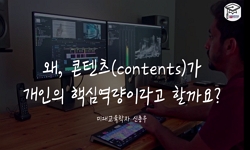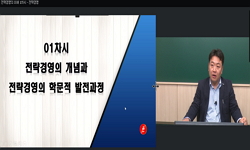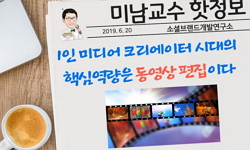한국과 중국의 ‘신역사교육과정’ 비교 연구 본 연구는 한국의 2015 개정 교육과정 중 역사과 내용을 중국의 2017 '보통고중역사과정표준'과 비교 연구하여 한국 역사교육과정의 발전에 도...
http://chineseinput.net/에서 pinyin(병음)방식으로 중국어를 변환할 수 있습니다.
변환된 중국어를 복사하여 사용하시면 됩니다.
- 中文 을 입력하시려면 zhongwen을 입력하시고 space를누르시면됩니다.
- 北京 을 입력하시려면 beijing을 입력하시고 space를 누르시면 됩니다.
한국과 중국의 ‘신역사교육과정’ 비교 연구 = A comparative study of ‘the new curriculum of history education’ between Korea and China
한글로보기https://www.riss.kr/link?id=T15128804
- 저자
-
발행사항
강릉 : 강릉원주대학교 교육대학원, 2019
-
학위논문사항
학위논문(석사)-- 강릉원주대학교 교육대학원 : 역사교육 2019. 2
-
발행연도
2019
-
작성언어
한국어
-
주제어
2015 개정 역사과 교육과정 ; 2017 보통고중역사과정표준 ; 국정교과서 ; 핵심역량 ; 핵심소양
-
발행국(도시)
강원특별자치도
-
형태사항
26 cm
-
일반주기명
지도교수: 김홍길
-
UCI식별코드
I804:42001-000000010328
- 소장기관
-
0
상세조회 -
0
다운로드
부가정보
국문 초록 (Abstract)
한국과 중국의 ‘신역사교육과정’ 비교 연구
본 연구는 한국의 2015 개정 교육과정 중 역사과 내용을 중국의 2017 '보통고중역사과정표준'과 비교 연구하여 한국 역사교육과정의 발전에 도움이 될 의미 있는 내용을 찾아보고자 한다.
우리나라 교육과정은 해방 이후 교수요목에서 시작되었다고 할 수 있다. 따라서 본 연구에서는 제도적 변천 과정을 1946년 교수요목기부터 시작하여 2009 개정 교육과정까지 살펴보았다. 중국은 교육과정을 ‘교학대강(敎學大綱)’ 혹은 ‘과정표준(課程標準)’으로 명명하고 있다. 중국의 교육과정의 변화는 ‘일강일본(一綱一本)’제, ‘일강다본(一綱多本)’제, ‘다강다본(多綱多本)’제로 크게 3단계로 구분하고 있다.
한국과 중국의 신 국가교육과정에서 나타난 역사 교육과정에 관하여 비교 분석하고자 한다. 첫째는 양국의 역사 교육과정의 구성 방식에 대하여 분석과 비교를 하고, 둘째로는 두 역사 교육과정의 성격과 목표에 관하여 살펴보면서 한국의 ‘핵심역량’과 중국의 ‘핵심소양’에 대한 내용을 비교 분석하여 정리하였다.
한국과 중국의 고등학교 역사교과의 편제와 구성에는 많은 차이가 존재한다. 한국의 경우 ‘한국사’를 필수 교과로 배우고 이후 ‘동아시아사’와 ‘세계사’ 교과목은 선택 교과로 편성되었다. 중국의 경우는 필수 교과로 ‘중외역사강요’ 교과를 배우고 ‘선택Ⅰ’ 교과로 ‘국가제도와 사회 치리’, ‘경제와 사회생활’, ‘문화 교류와 전승’ 3개의 교과목으로 편성되었으며 ‘선택Ⅱ’ 교과로는 ‘사학 입문’과 ‘사료 연독’으로 편성되어 한국 역사과 교육과정보다 상대적으로 많은 교과목이 편성되었다.
한편 신교육과정의 편성과 내용을 분석한 결과 한국과 중국의 교육과정이 정부의 정치적 개입에 의해 큰 영향을 받았다는 것을 확인할 수 있었다. 한국의 역사교육은 1974년 박정희 정부의 유신체제의 유지를 위해 역사교과서는 국정화로 변화되어 오랜 기간 정치적 논쟁을 위한 싸움의 장으로서 교육보다는 정치적인 이념을 실현하는 수단으로 활용 되었다. 그리고 2011년 2007 개정 교육과정의 등장과 함께 37년 만에 국정교과서는 우리 역사교육과정에서 자취를 감추었다. 그러나 역사교과에 대한 정치적 개입은 아직 사라지지 않았다. 2015 개정 교육과정을 통하여 역사교과서의 국정화 회귀를 추진하며, 또다시 역사교육에 대한 직접적인 정치 개입을 시도하였다.
중국의 경우 중화인민공화국의 시작과 함께 1950년 학교현장에 당단과 공회를 조직함으로써 국과권력의 지배체제를 확립하였다. 1977년 개혁개방정책과 함께 교육과정의 현대화가 진행되었고 1988년에는 심정제도의 시행과 함께 ‘일강다본제’로 발전하였다. 2001년에는 교육과정에 대한 경쟁체제를 도입하며 ‘다강다본제’로 더욱 발전하였다. 그러나 2006년에 일어난 상해교과서 사건과 2012년 제18차 전국대표회의를 계기로 또 다시 정권의 입맛에 맞춘 역사교육과정이 완성되며 중국의 역사교육과정은 국정화로 회귀하였다.
한국의 역사교육은 직·간접적으로 당시 집권세력이 원하는 교육과정을 만들어왔다. 그러나 이제 한국은 그 같은 정치적 영향력에서 많이 벗어나 있다. 이러한 상황에서 자유발행제에 대한 논의가 지속적으로 진행되고, 그 과정에서 본 연구에서 제안한 상시적 교육과정 개발과 같은 새로운 제도적 개선들이 논의되어 자유발행제로 향하는 디딤돌이 되기를 희망한다.
다국어 초록 (Multilingual Abstract)
ABSTRACT The purpose of this study is to find out the contents which help the development of the Korean history curriculum through the comparative study between the history course of Korea’s 2015 revised curriculum and the standard of history cou...
ABSTRACT
The purpose of this study is to find out the contents which help the development of the Korean history curriculum through the comparative study between the history course of Korea’s 2015 revised curriculum and the standard of history course in general middle school and high school of China in 2017.
It can be said that the Korean education curriculum has been started from ‘Kyosuyomok’ after Korea was liberated. Therefore, I examined the process of institutional change in education from ‘Kyosuyomok’ period in 1946 to the revision curriculum in 2009. The Chinese curriculum is named ‘Gyohagdaegang’ or ‘Gwajeongpyojun’. The changes of the curriculum in China are mainly divided into three stages: "Ilgang-ilbon", "Ilgang-dabon", and "Dagang-dabon".
I want to compare the historical education curricula arisen in the new national curricula of Korea and China. Firstly, I analyzed and compared the way of history curriculum composition of the two countries. Secondly, by examining the characters and goals of the two history curricula, I compared and analyzed the contents of 'Core competence' in Korea and 'Core refinement' in China.
There exist many differences in the composition of high school history subjects in Korea and China. In Korea, 'Korean history' is an essential subject and 'East Asia history' and 'World history' are elective subjects. In China, 'An introduction to the history of China and foreign countries' is an essential subject. And, the three subjects of 'National system and social governance', 'Economy and social life', 'Cultural exchange and tradition' are 'Elective 1' courses. Also, 'An introduction to history' and ‘Reading the historical material' are ’Elective 2' courses. As a result, it can be said that the history education courses in China is more diverse than in Korea.
By the way, after analyzing the compositions and contents of the new curricula of Korea and China, I was able to confirm that the curricula of these two countries were greatly influenced by the political intervention of the government. When I investigated the history education in Korea, I was able to know that the history textbook was nationalized in 1974 to maintain the Restricted system of the Park Jeong-hee government. Thus, as a result of the long political battles, history textbooks were used as a means of realizing political ideology rather than developing education. In addition, with the emergence of the 2007 revised curriculum in 2011, the national textbook has been hidden in our history education course after 37 years. However, political intervention in the history subject has not yet disappeared. Through the 2015 revision curriculum, the history textbooks were recurred to nationalization and the history education was directly intervened by direct political force.
In the case of China, with the start of the People's Republic of China, the organization of the party and the committee was established at the school site in 1950. Thus, the rule by government and power was established. In 1977, together with the reform and the opening policy, the modernization of the education curriculum proceeded. And, in 1988, along with the enforcement of the Simjeong system, education curriculum developed into the 'Ilgang-dabon' system. In 2001, after the competition system for the education curriculum was introduced, it was further developed into 'Dagang-dabon' system. However, on the occasion of Shanghai textbook case in 2006 and the 18th national representative conference in 2012, the history education curriculum were deteriorated under the influence of the regime and the history education course of China returned to nationalization.
Korea's history education has directly or indirectly influenced by the ruling party at the time. But now Korea's history education is far from the political influence. In this situation, I hope that the discussions about the free issue system will be continued. And, in the process, I hope that new institutional improvements such as the Continuous curriculum development proposed in this study will be discussed and such discussions can become a stepping stone toward a free issue system.
목차 (Table of Contents)
- 목차
- 국문초록
- Ⅰ. 한·중 교육과정의 제도적 변천 3
- 목차
- 국문초록
- Ⅰ. 한·중 교육과정의 제도적 변천 3
- 1. 한국 교육과정의 제도적 변천 4
- 2. 중국 교육과정의 제도적 변천 13
- Ⅱ. 한·중 ‘신역사교육과정’의 비교 및 분석 19
- 1. 역사 교육과정의 핵심역량 20
- 1) 한국의 ‘2015 개정 교육과정’의 역사과 핵심역량 20
- 2) 중국의 2017 ‘보통고중역사과정표준’의 핵심소양 23
- 2. 역사교과 편제와 구성 27
- 1) 한국의 ‘2015 개정 교육과정’의 역사과 편제 27
- 2) 중국의 2017 ‘보통고중역사과정표준’의 편제 31
- Ⅲ. 한·중 ‘신역사교육과정’의 문제점과 정치개입 36
- 1. 한국의 ‘2015 개정 교육과정’의 정치개입 36
- 2. 중국의 2017 ‘보통고중과정표준’과 정치개입 41
- 3. 역사교육의 새로운 방향 45
- 맺음말 47
- 참고문헌 49
- ABSTRACT 54












